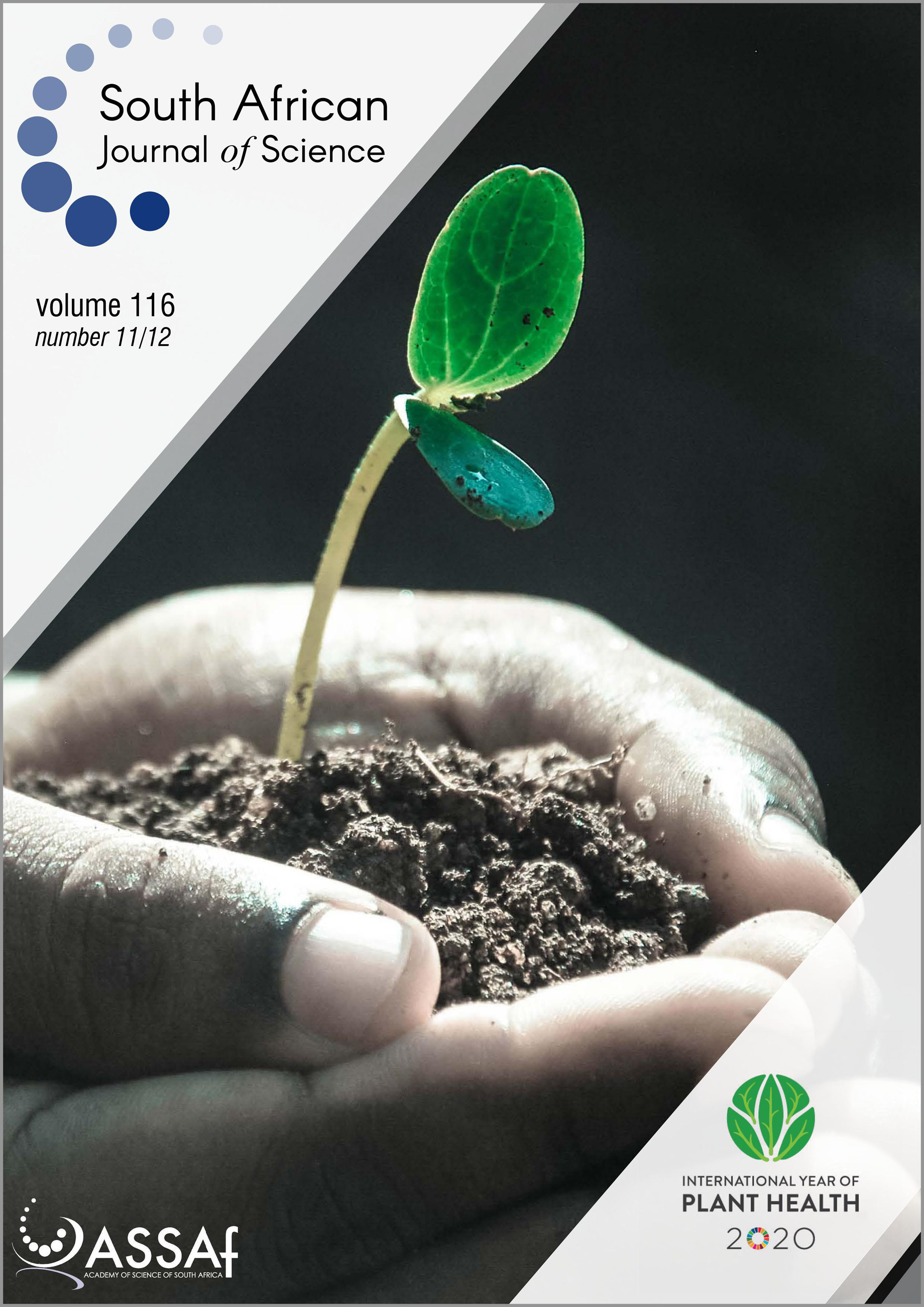Benefits of maize resistance breeding and chemical control against northern leaf blight in smallholder farms in South Africa
DOI:
https://doi.org/10.17159/sajs.2020/8286Keywords:
fungicide, disease resistance breeding, northern corn leaf blight, NCLB, gray leaf spot, grey leaf spot, GLS, PLS, common rustAbstract
Maize underpins food security in South Africa. An annual production of more than 10 million tons is a combination of the output of large-scale commercial farms plus an estimated 250 000 ha cultivated by smallholder farmers. Maize leaves are a rich source of nutrients for fungal pathogens. Farmers must limit leaf blighting by fungi to prevent sugars captured by photosynthesis being ‘stolen’ instead of filling the grain. This study aimed to fill the knowledge gap on the prevalence and impact of fungal foliar diseases in local smallholder maize fields. A survey with 1124 plant observations from diverse maize hybrids was conducted over three seasons from 2015 to 2017 in five farming communities in KwaZulu-Natal Province (Hlanganani, Ntabamhlophe, KwaNxamalala) and Eastern Cape Province (Bizana, Tabankulu). Northern leaf blight (NLB), common rust, Phaeosphaeria leaf spot, and grey leaf spot had overall disease incidences of 75%, 77%, 68% and 56%, respectively, indicating high disease pressure in smallholder farming environments. NLB had the highest disease severity (LSD test, p<0.05). A yield trial focused on NLB in KwaZulu-Natal showed that this disease reduced yields in the three most susceptible maize hybrids by 36%, 71% and 72%, respectively. Eighteen other hybrids in this trial did not show significant yield reductions due to NLB, which illustrates the progress made by local maize breeders in disease resistance breeding. This work highlights the risk to smallholder farmers of planting disease-susceptible varieties, and makes recommendations on how to exploit the advances of hybrid maize disease resistance breeding to develop farmer-preferred varieties for smallholder production.
Significance:
- Northern leaf blight, grey leaf spot, Phaeosphaeria leaf spot and common rust diseases were widespread in KwaZulu-Natal and Eastern Cape smallholder maize fields where fungicides were not applied.
- NLB was the most severe maize leaf disease overall.
- NLB caused maize leaf blighting, which reduced grain yields by 36–72% in susceptible maize hybrids.
- Maize resistance breeding has produced locally adapted hybrids that do not have significant yield losses under NLB disease pressure.
Downloads
Published
Issue
Section
License

All articles are published under a Creative Commons Attribution 4.0 International Licence
Copyright is retained by the authors. Readers are welcome to reproduce, share and adapt the content without permission provided the source is attributed.
Disclaimer: The publisher and editors accept no responsibility for statements made by the authors
How to Cite
- Abstract 1032
- PDF 1017
- EPUB 199
- XML 304
- Supplementary Material 128
Funding data
-
Department of Agriculture, Forestry and Fisheries
Grant numbers 92061;98617 -
National Research Foundation
Grant numbers 92061; 98617 -
United States Agency for International Development












.png)